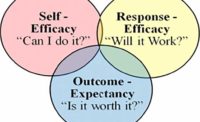Oh really?
Let’s start this discussion of safety bullying by talking about discipline. I’ve met many managers who give a negative lecture to an injured employee because the organization’s safety record was tarnished by the injury. The embarrassed employee is simply reminded of the bullying aspects of corporate safety. The result: an increased commitment to not volunteer for safety programs, nor to encourage others to participate.
What about progressive discipline? The standard approach includes three steps. After the third infraction, it’s common to send the employee home for days without pay. When employees are punished by being temporarily dismissed, we actually expect them to perform better when they return to work. We hope they learn something from this demeaning punishment, reasonably perceived as bullying.
Investigating to find a root cause
Conducting an injury “investigation” to find a root cause could make you a safety bully. This approach can put employees on the defensive, even preventing disclosure of hazards or barriers to safe work practices. After all, most people will interpret “investigation” to mean “criminal investigation.” The thinking: “They will ask ‘why’ five times to find the person responsible for the injury and/or property damage.”
Setting zero injuries as a goal
You can be a safety bully if you set safety mandates or expectations too high. Holding people accountable for numbers (outcomes) they do not believe they can control is bullying. It’s a sure way to produce negative stress or distress — fear. Some people won’t be stressed because they won’t take these goals seriously. Experience has convinced them they cannot control the numbers, so they simply ignore the goal-setting exhortations.
What does the goal of zero injuries mean, anyway? Consider the common slogan, “All injuries are preventable.” This can make an injured party feel like a bullying victim. The victim clams up, thinking, “If they already know enough to prevent this, they don't need my input.”
Misuse of feedback
If you anticipate a “feedback session” with unpleasant emotions, you could feel as though you are being bullied. Constructive criticism is an oxymoron.
Corrective feedback is not an indictment of one’s personality or an indicator of a character flaw. Feedback must not relate to an individual’s attitude, motivation, professional competence, or family history. If so, it is a form of bullying and belittling. The purpose of feedback is only to pinpoint desirable and/or undesirable behavior.
Behavior-based safety
You might qualify as a safety bully if you believe most injuries are caused by employee behavior. A number of BBS trainers market their BBS program on the premise that “95% of all workplace accidents are caused by behavior.” When these kinds of sales pitches became popular in the 1980s and early 1990s, leaders of labor unions objected vehemently and justifiably. Blame was placed on the employee and management was excused. Most worker behavior is an outcome of the work culture.
Procedures without a rationale
An injury-prevention program introduced without rationale but with corporate “official” backing, sometimes known as “flavor of the month” programs, can be a form of safety bullying. Employees are expected to rally around a campaign of slogans and questionable procedures. The pressure is on to reduce recordable injuries and make management look good. But employees are not educated about any research-based principles and rationale. The objective is a quick turnaround in injury rates. If that fails to happen, employees can expect a new program next month.
Misuse of incentives
Ask people what reward they want for achieving a safety-process goal, and the popular answer will be “money”. It can be used for almost anything. But it does not connect to safety. When a material reward in an incentive program is the primary payoff, the terms “behavior modification” and “bribery” come to mind. This is a form of bullying. An employee might think, “It’s obvious the boss is trying to manipulate me.” Incentives should only be reminders to do the right thing. They should not bully employees into hiding injuries so the group can be rewarded, and they should not come off as manipulative or a form of peer pressure.
Following the Golden Rule
Believe it or not, the so called “Golden Rule” can be perceived as bullying. Case in point: When I was in the fifth grade my teacher called me to the front of the class to recognize me for the excellent job I did on my homework. Afterward, three boys from the class beat me up in the playground.
My teacher treated me the way she wanted to be treated, with public recognition, certainly not the way I wanted to be treated. I didn’t want public recognition for academic success. It wasn’t perceived by my peers as “cool,” and the result for me was painful. Treating others the way you want to be treated can be viewed as bullying — pushing your values on someone else. Where’s the empathy?
The value of empathy
Empathy is not the same as sympathy. We sympathize when we express concern or understanding for another individual’s situation, but we empathize when we identify with another person’s situation and realize what it’s like to be in that person’s shoes. Empathy is an excellent antidote for bullying. An empathic level of awareness and appreciation is the opposite of bullying.
Oversimplifying human dynamics
Misleading safety marketing tactics that grossly oversimplify human dynamics can result in safety bullying. For example, focusing on a limited number of person traits or states as the cause of an injury can come across as finding fault in people. The search and discovery of critical contributing factors is stifled. This pop psychology can also limit or bias the conversations needed to identify the system factors that influence human factors. The human side of keeping people safe is just not that simple.
In conclusion
The all too common safety-management practices reviewed here reflect perpetual confusion and misunderstanding of the human dynamics of keeping people safe. These methods often come across as safety bullying. Eliminating perceptions of safety bullying is not easy. It requires education, training, customization, commitment, and continual evaluation and refinement. The perception of safety bullying reduces the potential of your safety culture to reach injury-free.



